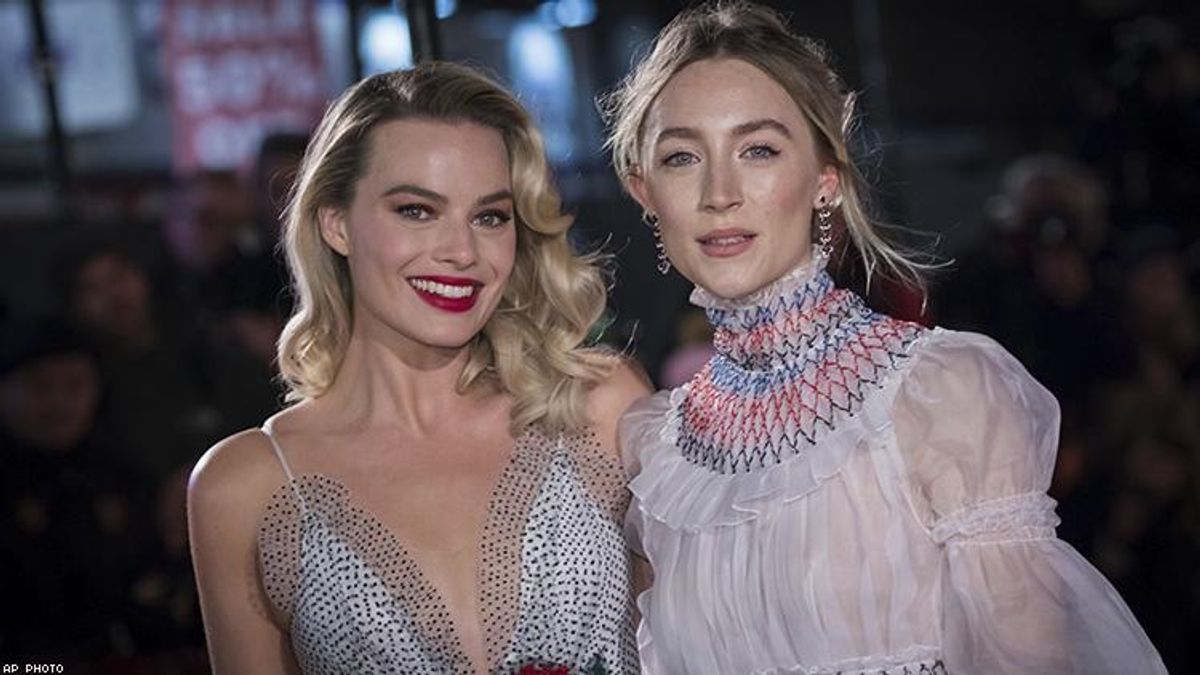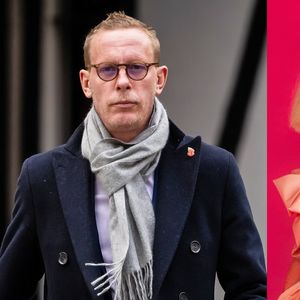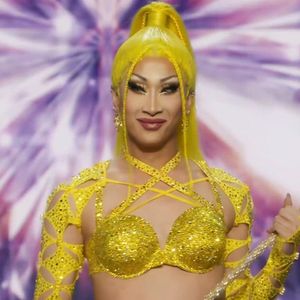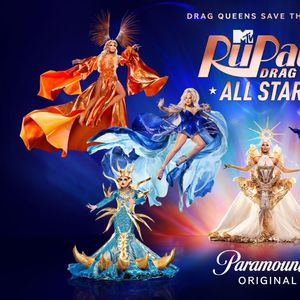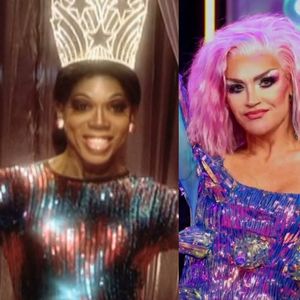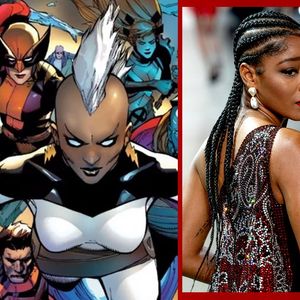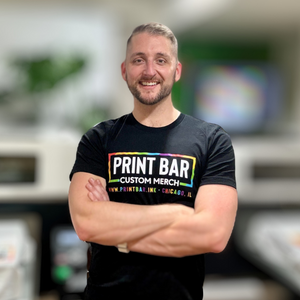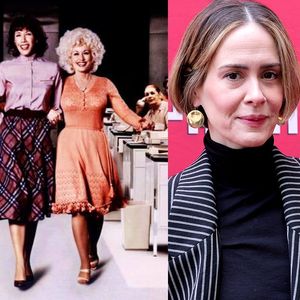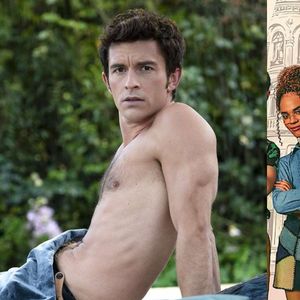Much ado has been made about the historical accuracy of the new film Mary Queen of Scots, which portrays the 16th-century queens Mary Stuart and Elizabeth I as having great respect for one another, exploring the idea that given different circumstances, the women could have been friends. At the same time, the film excoriates weak men. It highlights their fear of otherness as something that fuels the patriarchy and is a direct line from the Elizabethan era to the current political climate where women in power are a "scourge," as one particularly toxic male character puts it in the movie, and where sexually fluid men at court meet with gruesome ends.
"I know your heart has more within it than the men who counsel you," Saoirse Ronan's impassioned Mary Stuart issues to Margot Robbie's Elizabeth when they finally meet in the film (which did not happen in life). The line encapsulates the notion that the women in the film from renowned theater director Josie Rourke must band together and outwit their slippery male advisers at every turn or else fall prey to their climbing and greed.
"At that time, it was so imbalanced. Being a man superseded everything. You could've been born rightfully onto the throne, but you're a woman," Robbie tells The Advocate about the film's themes. "You are not secure in that position at all."
"In fact, all your advisers and the general public are just waiting for you to marry a dude so that they have a king, and then everything's stable," Robbie continues. "They really were searching for that stability, and they saw stability in a male ruler."
Mary Queen of Scots, with powerhouses Ronan (Lady Bird, Brooklyn) and Robbie (I, Tonya; The Wolf ofWall Street) leading the cast, offers a rare look into Mary, who's mostly played second fiddle to Elizabeth in pop culture portrayals.
As Mary's story generally goes, she spent much of her young life in France, becoming queen at 16 before returning to Scotland to rule there upon the death of her husband at age 18. The move placed Mary, a Catholic, in conflict with the Protestant ruler Elizabeth. Mary eventually married her cousin Lord Darnley and produced a male heir to the throne, which in the film proves to be her undoing. She fled to England and was imprisoned until she was beheaded 19 years later when Elizabeth signed her death warrant.
British historian John Guy writes in the prologue for the biography Queen of Scots: The True Life of Mary Stuart (on which the film is based) that his purpose in writing the book was to get to the truth about her, in part by going back and researching apocryphal letters and accounts, some of which hadn't been examined since the 19th century.
Guy's intent was "to see her not merely as a bundle of stereotypes or as a convenient and tenuously linked series of myths, but as a whole woman whose choices added up and whose decisions made sense," he explains in the prologue.

While a feminist retelling of a historical figure whose story has most often been subsumed by Elizabeth's intrigued Ronan, she was also eager to do the Scottish heroine justice, she says.
"There've been a couple of versions of Mary, but apart from the Vanessa Redgrave one years ago [1971's Mary, Queen of Scots], there hasn't been a definitive Mary Queen of Scots film. And she is a Scottish idol. She is so important to Scotland," Ronan tells The Advocate. "She's completely beloved, and the fact that her story hadn't fully been told before is kind of mad. Being Irish and our country having such a similar history to Scotland, it just made me feel like it was quite a personal thing to take on."
Throughout Rourke's lush film that emphasizes the physical distance between them, Mary and Elizabeth exchange letters in which they nod to their sisterhood, their unique experience of being women in power who could have only really understood one another.
"They [Mary and Elizabeth] held on to [power] with all their might, because they knew it could be taken away from them at any point, which means that the deep understanding between them was so strong," Ronan says. "There was no other woman in their position in the British Isles and in Europe. Nobody else would have that understanding."
While they were both nominated for the Best Actress Oscars last year, Robbie and Ronan are far from the rivals their characters are forced to become at the hands of the men who surround them. The actresses display great admiration for one another and an easy rapport as they discuss the film. Robbie, mirroring the movie's bonds of sisterhood, says the opportunity to work with women, specifically Ronan, was one of the main draws to the film for her.
"I've wanted to work with her [Ronan] for years and years," Robbie says, adding that she was also taken by House of Cards scribe Beau Willimon's script and drawn to Rourke at the helm.
In addition to exploring the unique experience of women in power circa 1545, another aspect of the film that fascinated both actresses is the notion of female agency (or lack thereof) and its flip side, the policing of women's bodies in terms of valuing them merely for the viability of their reproductive organs to produce male heirs. Not so divorced from history, that's also the central impetus for the very of-the-moment The Handmaid's Tale.
"Mary married and had a baby, and Elizabeth took on the persona of the virgin queen and, in her mind, avoided any question of marriage in doing so," Robbie says. "Both, I think, were conscious decisions and definitely reactionary to the knowledge that they were in a very vulnerable position, even though there were rules. They were in very vulnerable positions because they were women in such a male-dominated society."
"No matter how politically astute and intelligent and personable they would've been, it was their bodies that the state wanted. Getting them married, having the wedding night, and putting a baby in them. That's it, and then they're gone," Ronan says of the plight of women of royal lineage. "Elizabeth was smart enough to know that. And as soon as Mary had a son, she was gone. All of her power, all of her God-given right and duty was gone. And it was given to an infant because he held more power and was higher up in the food chain than she was. And that kind of says it all."

Beyond depicting the Mary and Elizabeth's veneration for one another, Mary Queen of Scots flies in the face of patriarchal norms in that it elevates various kinds of relationships beyond traditional romantic, sexual, and heterosexual love.
As well-documented in history, Elizabeth engages in a long, abiding love affair with Robert Dudley (Joe Alwyn) out of wedlock. She's also cared for with great protection and tenderness by her lady-in-waiting Bess (Gemma Chan). Meanwhile, Mary is depicted as having intimate friendships with her ladies-in-waiting as well as a convivial friendship with her queer, gender-nonconforming private secretary, Rizzio (Ismael Cruz Cordova). It is that relationship that is ultimately used to break and dethrone a very pregnant Mary when she's accused of having had a sexual dalliance with him, although it's actually her ineffectual husband, Darnley, who beds Rizzio in the film.
Historically, both men were disposed of in gruesome ways at the hands of the men who seek to oust Mary. There is a dispute over whether or not they were actually queer men, although Guy arrived at the conclusion that they were through his research for the biography.
Still, the film's treatment of fluidity in love and friendship, sexual or otherwise, is very modern and also true to that time period, Ronan and Robbie assert.
"The amazing thing about it is that people did just sleep with whoever back then because it was the time of the Renaissance. Especially in the French court and throughout Europe, everyone was sort of sleeping with everyone. And there were no qualms about whether it was a man or a woman," Ronan says. "Mary sort of brought that with her when she came back to Scotland, which they were shocked by. At that stage, Puritanism, Presbyterianism, and Protestantism were very stoic. There was a Calvinist way of teaching religion and living. It was all about the Bible and it was all very strict."
Adding to Ronan's remarks, Robbie touches on the idea of labeling that is at once clung to and eschewed today.
"It's a very modern thing to label sexuality, and it was, in fact, far more liberal back then. By all historical accounts, there were many rulers who were notoriously bisexual. They were never labeled bisexual. They were never labeled gay, bisexual, straight, or whatever," Robbie says. "It was more fluid. I think it's a very modern thing, in general, to put a label on everything."
Mary Queen of Scots is currently in select theaters. The film will be in wide release December 21.
